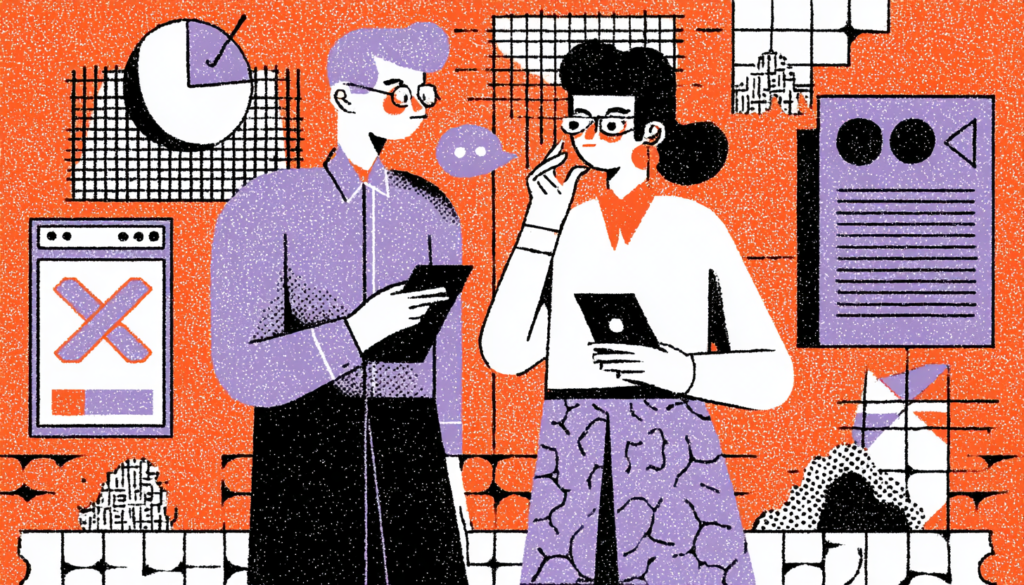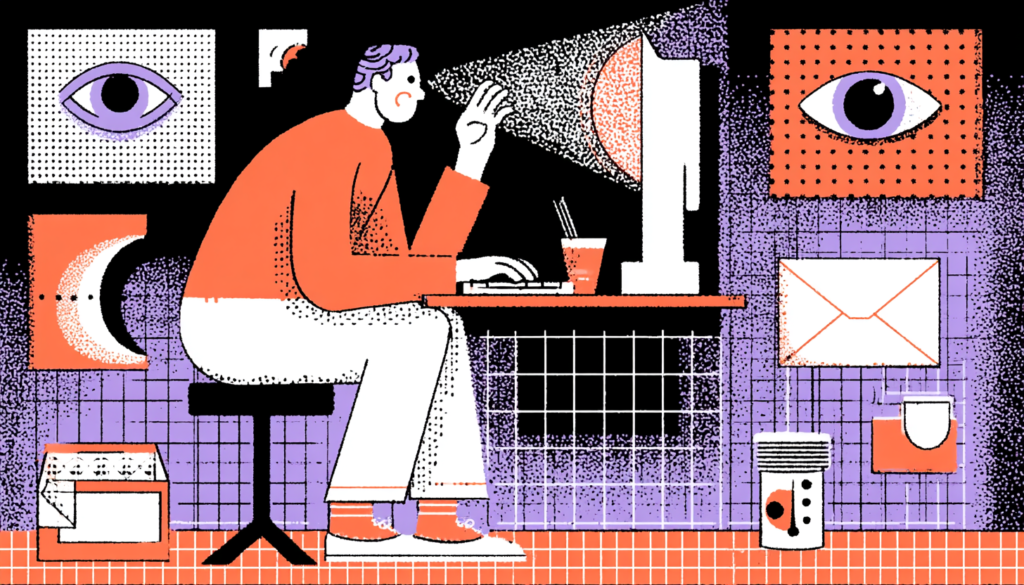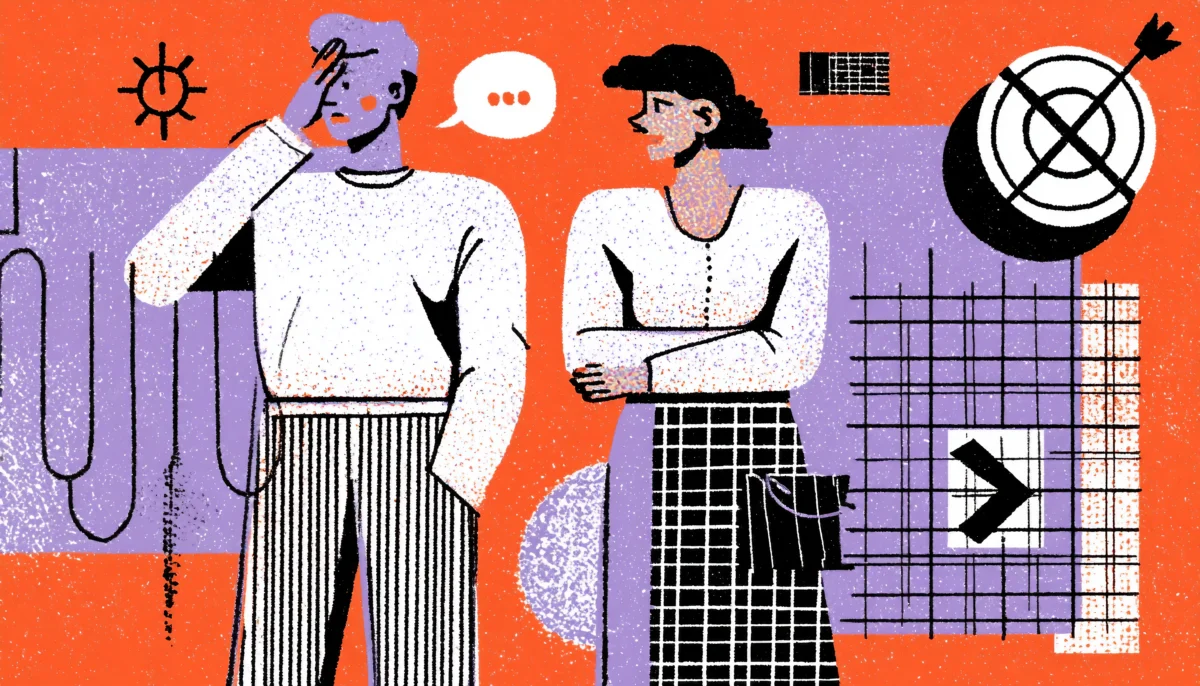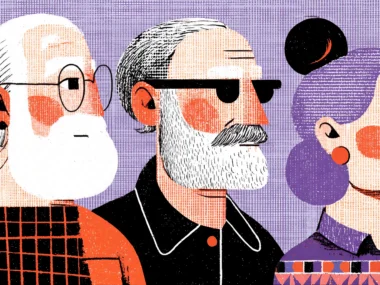In the dynamic realm of digital product design, UX designers navigate the intersection of business strategy and human experience. Every button, nudge, and swipe matters. But with great power comes great responsibility. How do we, as designers, build experiences that serve both the bottom line and the people who use our products every day? That, my friend, is the ethical balance we must maintain.
Understanding the Ethical Landscape
Why UX Ethics Matter More Than Ever
Let’s face it—UX design isn’t just about making things look appealing. It’s about influencing decisions. Guiding behavior. And sometimes, manipulating outcomes. Such behavior gives us an immense amount of psychological power. And that’s where ethics come into play.
Consider this: if you’ve ever designed a sign-up flow, you’ve had the choice to make the “accept all” button bold and bright while hiding the “decline” option in tiny grey text. That’s not just bad design—it’s what we call a dark pattern. And it’s more common than we’d like to admit.
Why does this matter? Because users are people. Real people. They have genuine objectives, feelings, and constraints. When we prioritize clicks over clarity, we exploit trust. And in today’s attention economy, trust is your most valuable currency.
Take the example of cookie consent banners. How often have you been gently encouraged to accept tracking in order to access content? Companies know that most users won’t bother digging into settings. That’s manipulation disguised as convenience. Ethical UX, instead, would give equal weight to both acceptance and rejection, making choice real—not performative.
And then there’s the issue of surveillance UX—where designs subtly encourage users to share more data than they realize. These choices, ranging from autoplay video ads to always-on location tracking, blur the boundaries between helpful and harmful.
Ethical design begins with awareness. If we don’t recognize how our design impacts real people, we can’t begin to address it. That’s why ethics must be a constant presence in your design process, not a post-launch audit.

Aligning Business Goals with User Trust
Designing for Profit and Principles
Ah, the eternal UX dilemma: Should we design for conversions or for compassion? Businesses want results. They want users to click, buy, and stay. And that’s perfectly valid—it keeps the lights on. However, when metrics dictate every decision, user well-being may be neglected. The result? The designs appear to deceive rather than to assist.
Think of the infamous “roach motel” pattern. You can sign up for a subscription in two clicks, but canceling takes you through a labyrinth of confusing steps. It works—in the short term. But it leaves users feeling deceived. In the era of social media and review platforms, a single negative experience can have a widespread impact.
Now imagine doing the opposite: making cancellation easy and transparent. Sounds risky? Brands like Netflix and Spotify do just that—and users love them for it. Turns out, when people feel in control, they’re more likely to return. Respect builds loyalty.
Ethical UX doesn’t mean sacrificing business success. It means aligning user satisfaction with key performance indicators. Want more purchases? Build trust first. Want higher engagement? Offer genuine value. That’s how you design systems, where the ethical outcomes are the business outcomes.
Another great example is the airline JetBlue. Unlike many competitors, JetBlue doesn’t hide fees in fine print. Their booking process is refreshingly straightforward. And guess what? Customers notice. The industry consistently rates the brand as one of the most trusted.
So the real question isn’t, “Should we prioritize ethics or revenue?” It’s “How can we align them so they support each other?” That shift in mindset changes everything.

Identifying and Avoiding Dark Patterns
Designing with Integrity Instead of Influence
Let’s call it like it is: some patterns are just dirty tricks dressed in sleek UI. They’re designed to confuse, mislead, or trap users into actions they didn’t fully consent to.
Here are some common dark patterns to watch out for:
- Forced continuity: Free trials that auto-renew without clear reminders.
- Confirmshaming: Guilt-tripping users into staying. (“No thanks, I hate saving money.”)
- Sneak into the basket: Auto-adding products during checkout.
- Trick questions: Checkbox copy that tricks users into opting into something they didn’t want.
These tactics might boost KPIs temporarily, but they erode something far more important: integrity.
As designers, we must be the moral compass in the room. Ask yourself, would I be okay if my grandmother used this product? If the answer makes you cringe, it’s time to rethink the flow.
Instead of hiding cancellation flows, what if you offered a thoughtful offboarding experience? Ask for feedback. Offer helpful alternatives. Let users leave with dignity. A pleasant exit can be the reason they return later.
One real-world example: Basecamp, a project management tool, makes it ridiculously simple to cancel. No tricks. No guilt. They simply need to make a respectful exit. And that transparency earns them lifelong fans.
Furthermore, tools like the “Deceptive Design” website catalog these shady patterns. Familiarize yourself with them. Bring them up in design critiques. The more we talk about them, the less acceptable they become.

Building an Ethical UX Culture
From Personal Mindsets to Teamwide Practices
Ethics isn’t a solo mission. It starts with the individual designer, but it only scales when baked into the culture of the team.
Begin with open conversations. Host ethical design reviews. Ask questions like
- Does this design respect user autonomy?
- Are we offering clarity or coercion?
- How would a first-time user experience this?
Embed ethical thinking into every stage of your design process—from discovery interviews to final QA. Make sure everyone from product managers to engineers understands the “why” behind ethical choices.
Create a design principles document that includes ethical considerations. Reference it in sprints. Share it during onboarding. Turn it into a living, breathing artifact that shapes how your team builds.
Leadership plays a key role. When managers and executives reward ethical decisions—not just growth hacks—you create an environment where trust is the norm, not the exception.
Mozilla is a great example of this in action. Their design language prioritizes transparency, security, and respect. And they bake these values into every product decision. They’re not just saying they care—they’re showing it through their UX.
And don’t forget user involvement. Bring real users into the loop. Conduct usability testing that explores not just usability, but emotional response. Ask: Did this experience feel honest? Did you feel respected? These insights are priceless.
Ethical UX doesn’t mean perfect UX. It means principled UX. And that requires a culture that values thoughtfulness over quick wins.







